Class 3 Maths Chapter 3 Solutions Question Answer Double Century
Double Century Class 3 Maths Question Answer
Double Century Class 3 Solutions
Let us Do (NCERT Textbook Page 16)
Question 1.
Look at the picture. Estimate and write the number of each of the following objects.
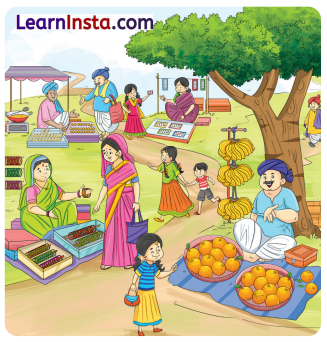
(a) Oranges: _____________
(b) Bangles: _____________
(c) Laddoos: _____________
(d) Barfi: _____________
(e) Bindis: _____________
(f) Bananas: _____________
Answer:
(a) Oranges: 22
(b) Bangles: 90
(c) Laddoos: 28
(d) Barfi: 25
(e) Bindis: 70
(f) Bananas: 36
(Answer may vary)
Let us Play (NCERT Textbook Page 17)
Fill in the missing numbers on the board.
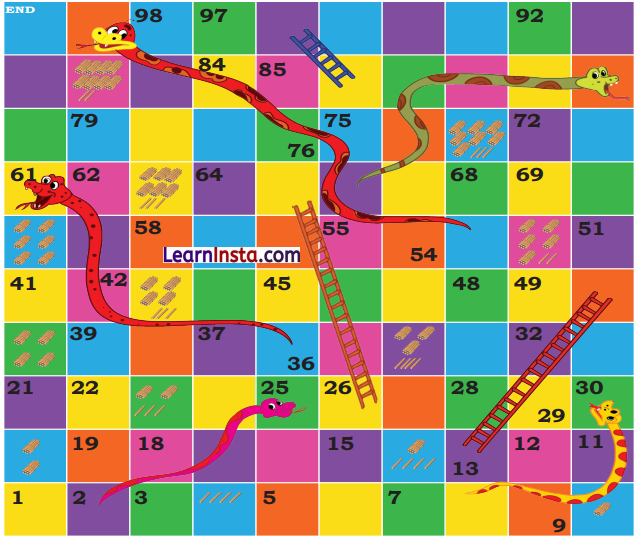
Answer the following on the basis of the Snakes and Ladders board:
Question 1.
Which number will you reach if you take the ladder from 13? _____________
Answer:
50
Question 2.
If you are on the snake at number 25, which number will you reach? _____________
Answer:
2
![]()
Question 3.
You are standing on 96. Which number on the die will take you to the snake’s mouth? _____________
Answer:
3
Question 4.
Show the number written on the tail of the longest snake using bundles and loose sticks. _____________
Answer:

Let us Think (NCERT Textbook Page 18)
Question 1.
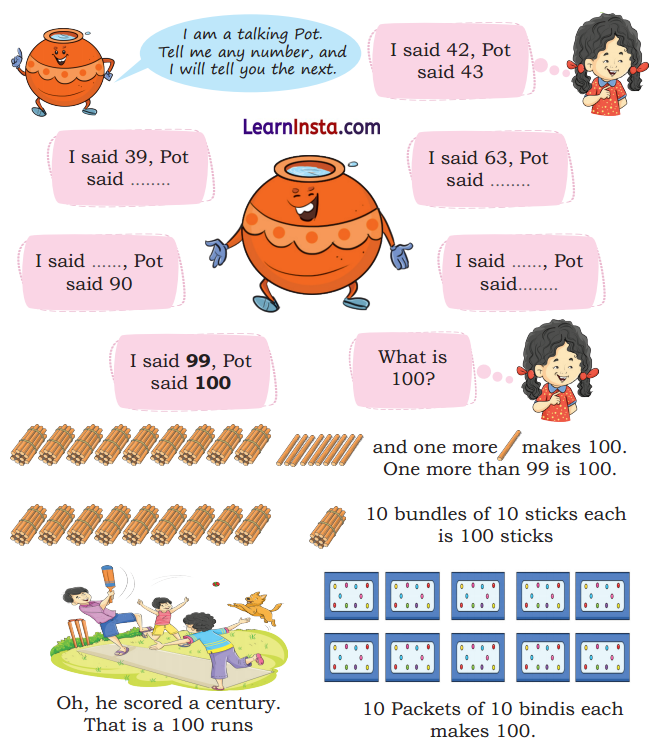
Answer:
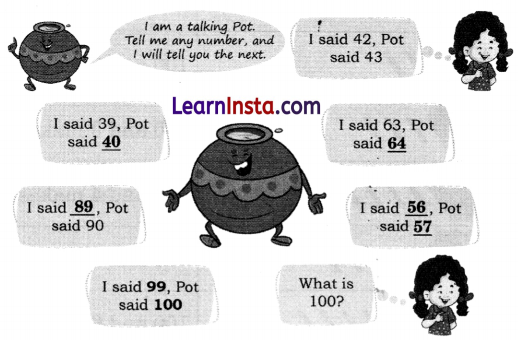
(Answer may vary)
Let us Do (NCERT Textbook Pages 19-20)
Question 1.
Fill in the blanks.

Bholu made 100 by jumping on 65 and then 35 more.

Make 100 by different jumps on this number line.

Answer:
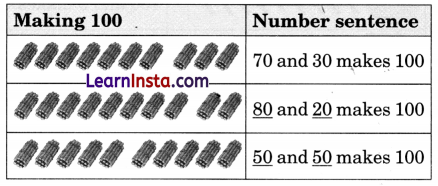
Bholu made 100 by jumping on 65 and then 35 more.
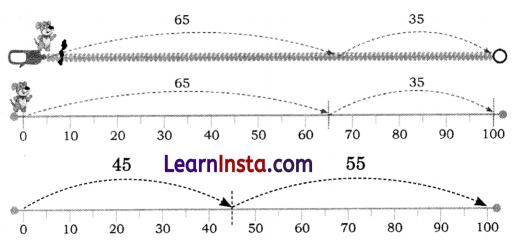
(Answer may vary)
![]()
Question 2.
Use matchstick bundles and a ginladi to make 100 in different ways.

Answer:
Do it yourself.
| 60 and 40 makes 100. | 45 and 55 makes 100. |
| 75 and 25 makes 100. | 15 and 85 makes 100. |
| 60 and 40 makes 100. | 95 and 5 makes 100. |
Question 3.
Write numbers in the blank spaces inside the flower petals so that the numbers in each petal add up to 100.
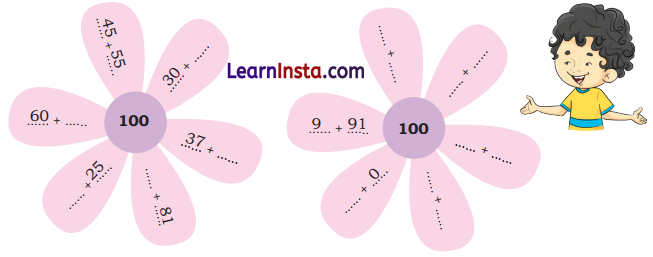
Answer:
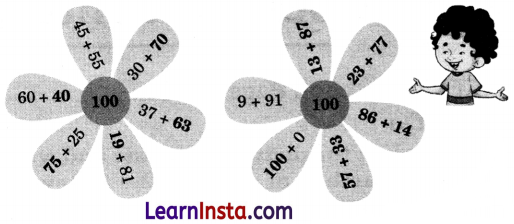
(Answer may vary)
Let us Explore (NCERT Textbook Page 20)
How many are 100?
Question 1.
Open a full box of matchsticks.

- Estimate the number of matchsticks in the box: _________
- Count the number of matchsticks in the box: _________
- How close was your estimate?
- How many boxes of matchsticks will get the total close to 100 matchsticks? _________ boxes.
Answer:
Do it yourself.
Question 2.
Take a handful of seeds like kidney beans, chickpeas, etc.

- Estimate the number of seeds you have in your hand: _________
- Count the number of seeds in your hand: _________
- How many handfuls of seeds will get the total close to 100 seeds? _________ handfuls.
Answer:
Do it yourself.
NCERT Textbook Page 21
Let’s observe the table and learn to write numbers beyond 100. Fill in the blank spaces.
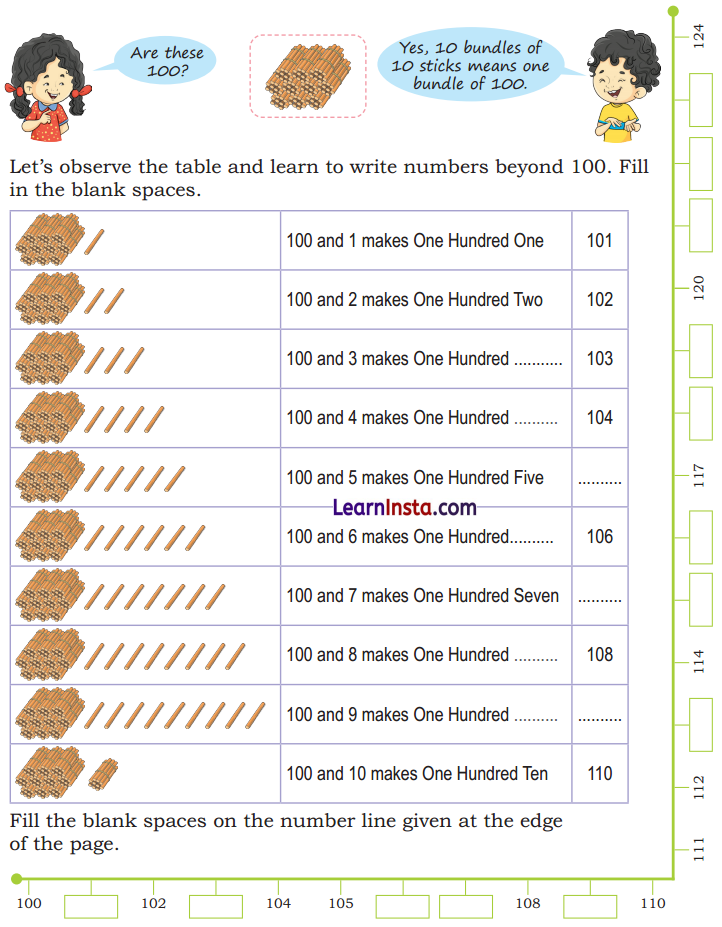
Answer:
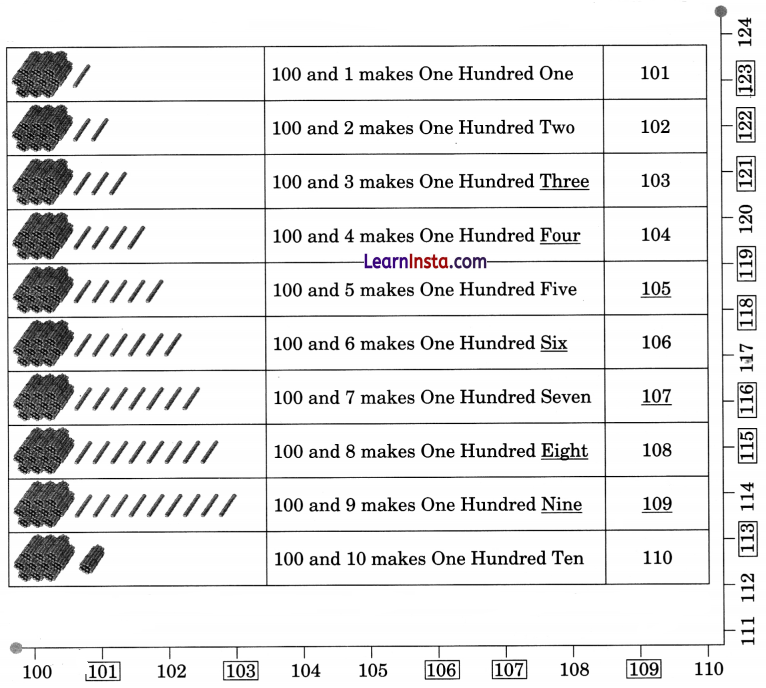
Let us Do (NCERT Textbook Page 22-23)
Question 1.
Let’s continue making numbers above 100 using matchstick bundles and loose sticks. In the table given below, identify the bundles and loose sticks and write the corresponding numbers.
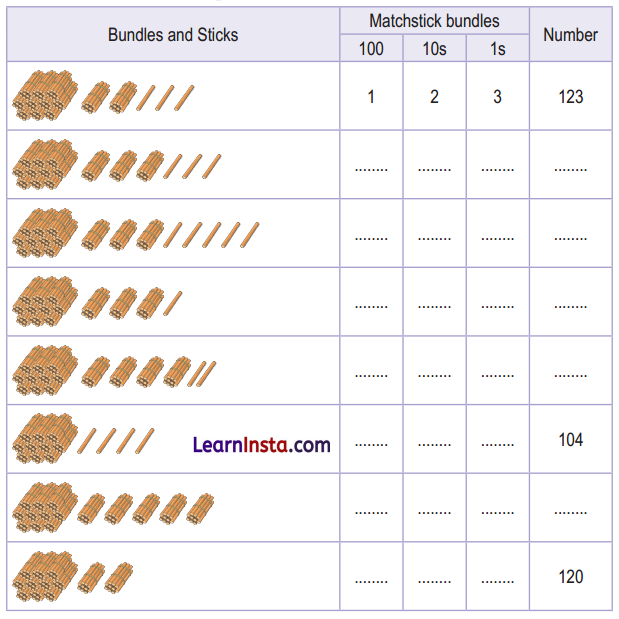
Extend this table in your notebook till 150. Do you observe something Common in all the numbers?
Answer:
Do it yourself.
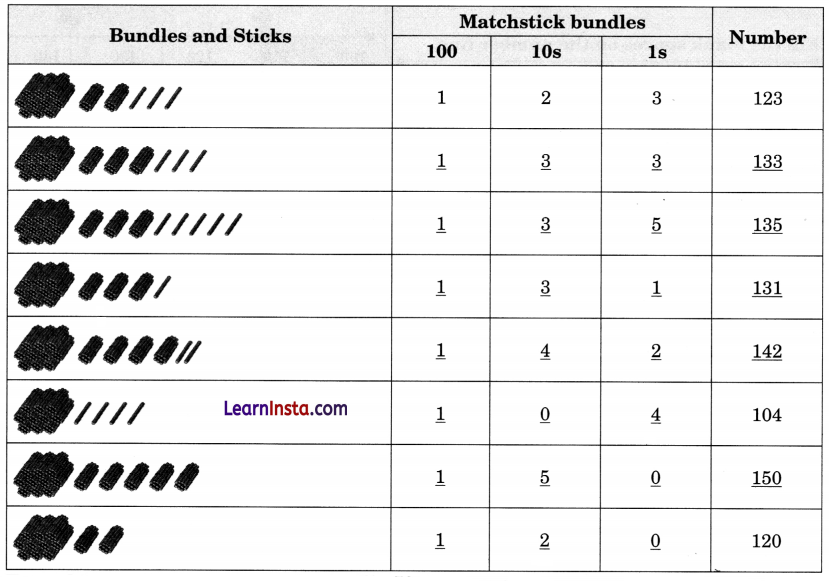
![]()
Question 2.
Match the numbers with the correct bundles and loose sticks.
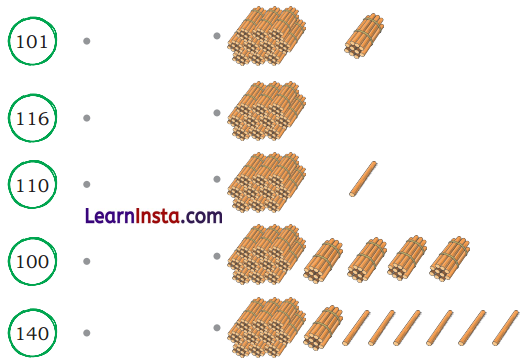
Oh! Talking Pot is back. It will say one more than whatever you say.
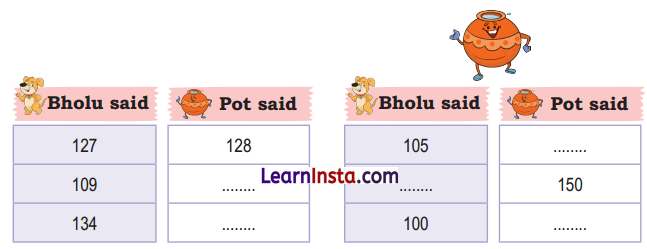
Fill the blank spaces on the number line.

Show the following numbers on the number line below.
- Place an arrow on 125.
- Make a tree on 112.
- Make a smiley on 149.
- Put a cross x on 137.

Answer:
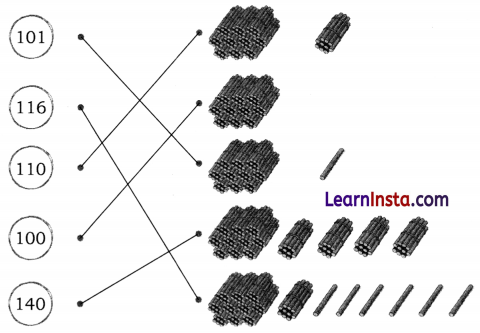
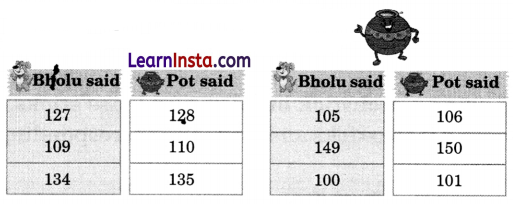


Let us Play (NCERT Textbook Page 24)
Let’s now count beyond 150.
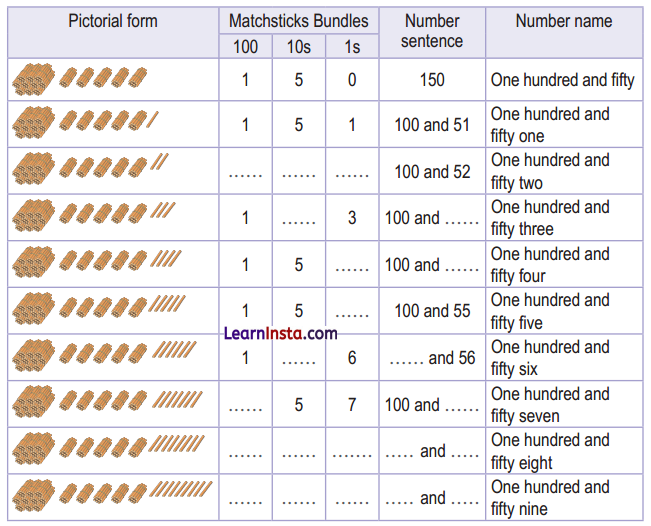
Extend this table till 200 in your notebook How much is 200?
Answer:
Do it yourself.
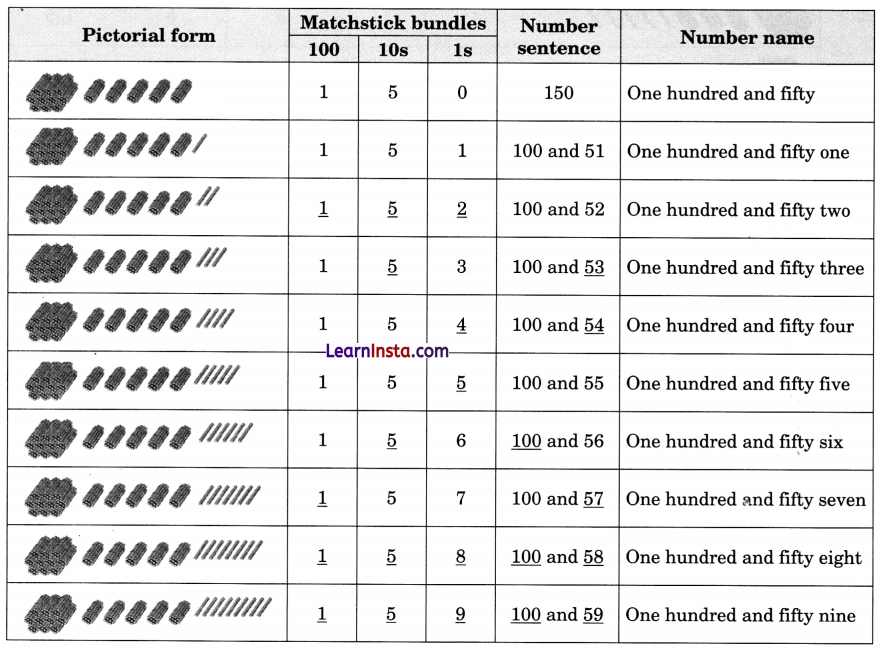
Let Us Do at Home (NCERT Textbook Page 25)
Fill a small container like a small bowl with seeds such as kidney beans, chickpeas, etc.

Look closely at the container to estimate how many seeds are in it. Your Estimate: _________ seeds.
Now count and see how close your estimation is to the actual number of seeds. Counted ___________ seeds.

Guess how many times you need to fill the container to get close to 200 seeds? Your guess: ___________ times.
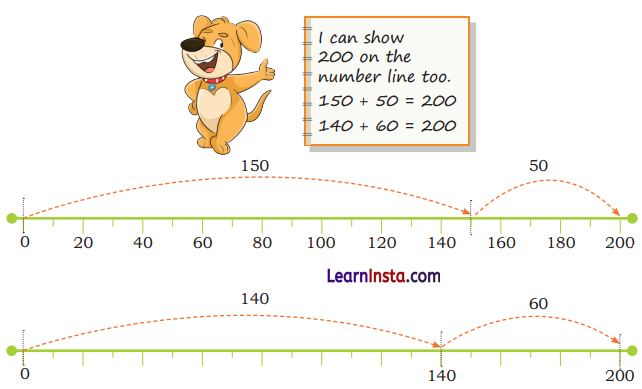
Write the numbers in order on the stones.
Answer:
Do it yourself.
Let us Do (NCERT Textbook Page 26-28)
Jumping Game
Question 1.
Draw jumps of 5 on the number line and write the numbers on the number line in the given spaces.

Answer:

Question 2.
Continue jumps of 20 and write the missing numbers on the given number line.

Answer:

![]()
Question 3.
Fill in the table.
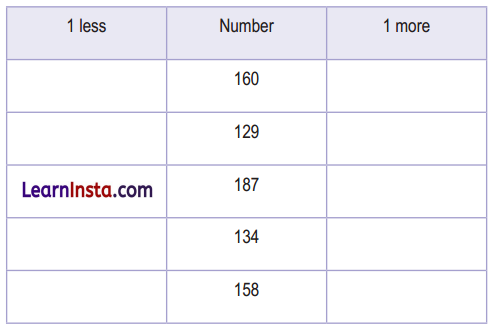
Answer:
| 1 Less | Number | 1 More |
| 159 | 160 | 161 |
| 128 | 129 | 130 |
| 186 | 187 | 188 |
| 133 | 134 | 135 |
| 157 | 158 | 159 |
Question 4.
Show at least two different ways of making the following numbers. Answers may vary.
(a) Use matchstick bundles to make 125.
Answer:
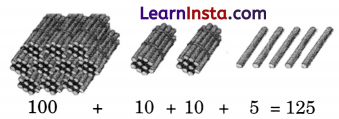

(b) Make 145 using a ginladi.
Answer:

(c) Make 170 on a number line.
Answer:

Question 5.
Fill in the empty boxes appropriately.
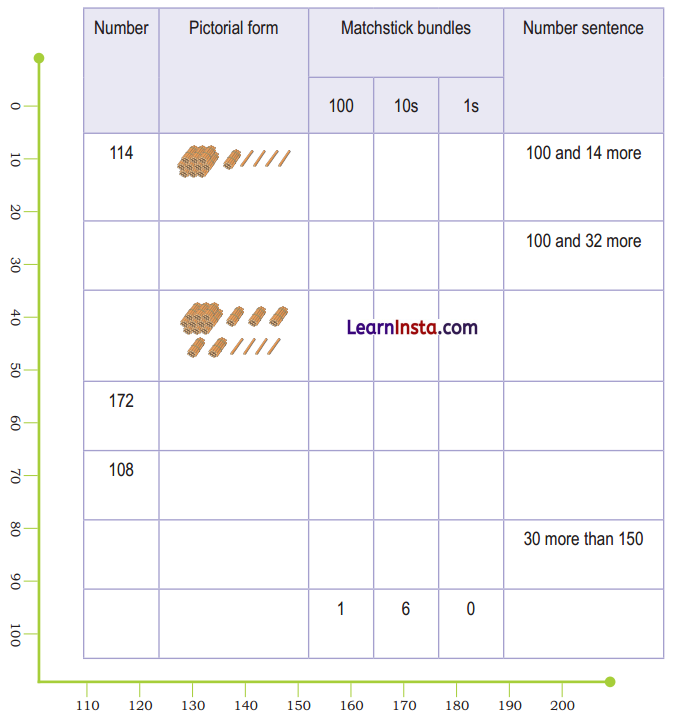
Answer:
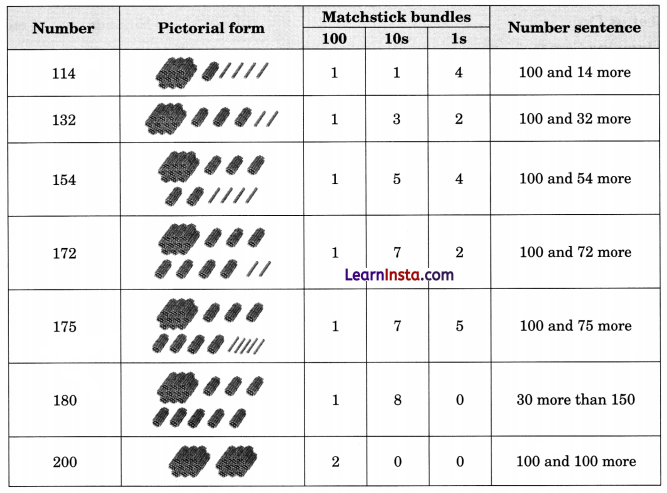
Question 6.
Mark the following numbers on the number line.
(a) 109, 112, 124, 134, 146

Answer:

(b) 155, 163, 178, 189, 198

Answer:

![]()
(c) 125, 142, 153, 174, 199

Answer:
